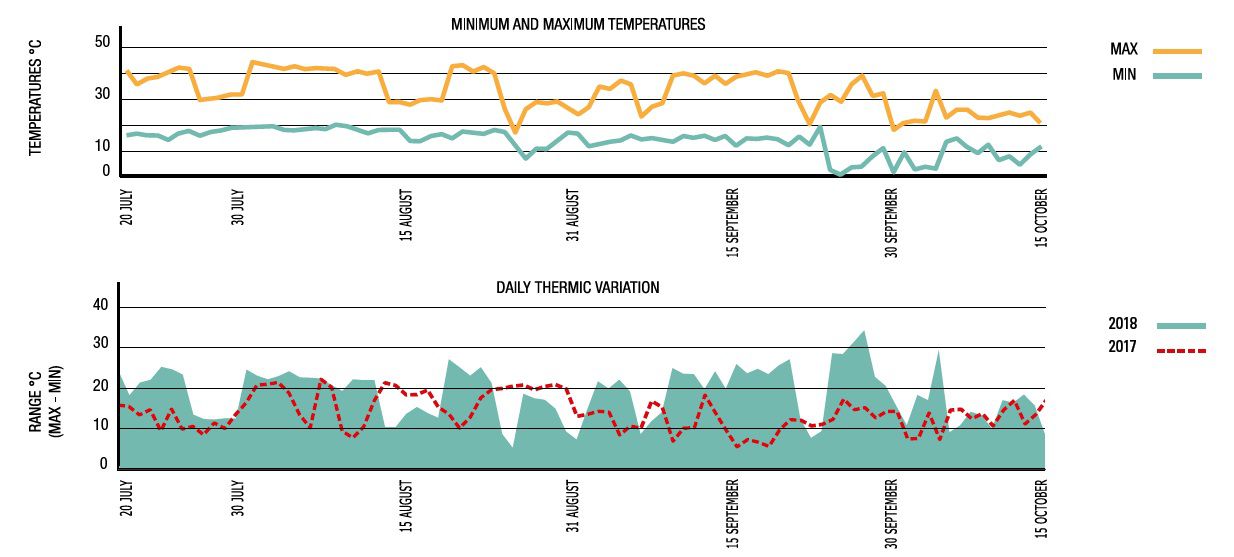VINTAGES
VINTAGE 2018
2018 GROWING YEAR
The 2018 growing year will be remembered as one of the warmest and most productive of the last 20 years. Favourable weather conditions and meticulous vineyard management resulted in grapes that were remarkably sound and healthy.
WEATHER CONDITIONS
Winter was long, rainy, and fairly severe, with minimum temperatures hovering around 0°C on most days, but without any extreme low points. In contrast to the two most recent seasons, 2016 and 2017, the late-winter cold period delayed budbreak, occurring on 15 April, by about 10 days. Subsequent more clement conditions, however, allowed the buds to open in a uniform manner almost contemporaneously across all varieties. Thanks to weather that was warm for the period, with highs reaching 28°C. and to abundant groundwater reserves filled through the rainy winter, the buds swelled rapidly in their initial stages.
In the first two months of vine growth, April and May, temperatures rose more steeply than in past seasons, which translated into a rapid and exemplary flowering in all varieties. The early varieties, such as chardonnay and pinot grigio, began flowering on 30 May, while the later performers, sauvignon blanc, malvasia istriana, and merlot, caught up a mere 4 days later, on 4 June.
Thus, although the season kicked off with a significant delay, the later warm conditions from budbreak through flowering compressed subsequent growth stages, and those stages actually occurred a bit early in the later part of the season. In June and July, temperatures held to historical averages, but right between July and August came a full week that saw a spike in heat, with temperatures exceeding 35°C. Following that spell, however, temperatures returned to seasonal averages.
WATER AVAILABILITY AND VINEYARD MANAGEMENT
With respect to rainfall, 2018 was on the low side, bringing 27% less than the historical average, amounting to 670mm over the growing season. The least rain fell in September, while July and August hewed to seasonal averages. Despite moderate rainfall over the summer, high evapotranspiration made necessary some careful irrigation applications to relieve water-stressed soils.
Harvest began in the last third of August for sauvignon blanc, pinot grigio, and other early-ripeners, then continued very leisurely through September for the other grapes, thanks to optimal weather.
2018 brought one of the heaviest crops of the last decade. Various factors occurring contemporaneously contributed to this result, such as high bud fertility, ideal heat and rainfall, exceptionally high fruit set, higher than average berry weight, and more efficient photosynthesis. The situation created by this confluence of factors made it necessary for us to deploy rigorous cluster-thinning in some of our crus to reduce the number and weight of clusters, and in some cases, shaping the clusters by removing the lateral wings or excessively-compact sections. Crop quantity and wine characteristics make 2018 much like 2008.



